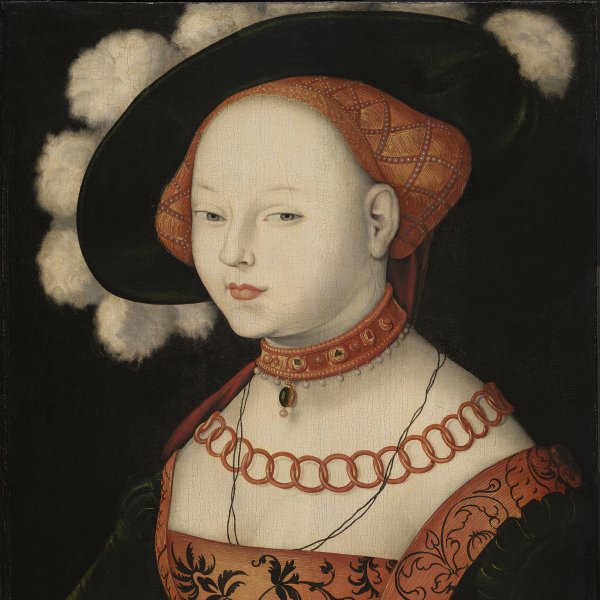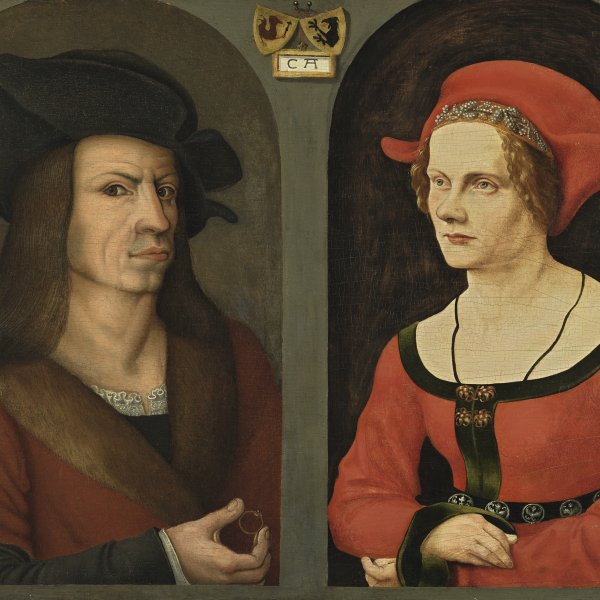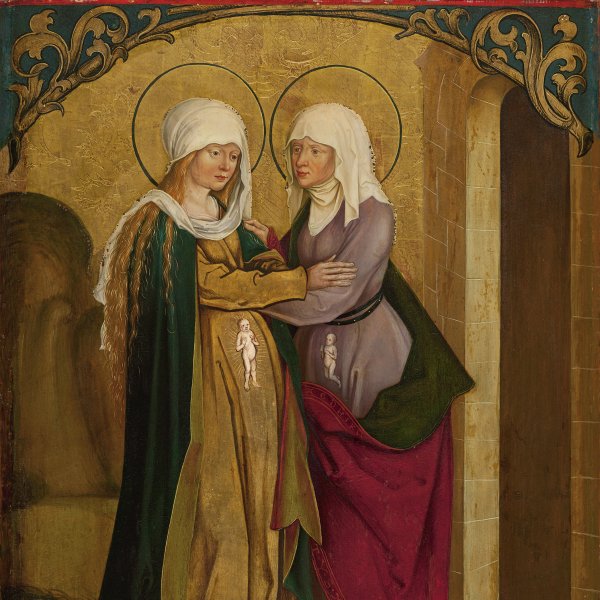Portrait of Thomas Cromwell
This small tondo, which can almost be considered a miniature due to its size, was attributed to Holbein by Friedländer. It depicts Thomas Cromwell, one of the artist’s patrons during his second trip to London in the summer of 1532. Determined to become Henry VIII’s court painter, Holbein continued to paint portraits during this period, primarily of German merchants in England.
For many years the present work was considered to be an autograph work by Holbein. Its size and dimensions suggest that it may have been one of a series of medallions designed to decorate a small chest or casket. Thomas Cromwell was a leading figure at the court of Henry VIII where he held various positions before becoming the monarch’s secretary in 1534 and subsequently Chancellor. He also obtained the title of Earl of Essex. Here is depicted bust-length and in near profile, looking to the left. His head is covered and he wears fur-trimmed clothes. The image has been related to the panel portrait of Cromwell in the Frick Collection, New York, dated around 1533-34 in which he is depicted with a severe expression, seated on a bench before a table.
MGA
This tondo with a portrait of Thomas Cromwell is an abbreviated but close copy of the Frick image. Cromwell looks to the left in more than half-profile with his close-cropped hair covered with the same hat. The band of fur around his neck is, however, narrower than in the Frick painting. The background has been simplified and only reproduces the colour of the textile in the New York painting. A comparison between the two reveals the lack of precision in the modelling and the significant difference in quality, factors that have led previous authors to suggest that the present work should be considered catalogued as “attributed to Hans Holbein”.
This type of miniature with bust-length or half-length images was first developed at the court of François I and was popularized by the French court artist Jean Clouet. The format seems to have arrived in England around 1526, while it was also used by Lucas Cranach for some of his depictions of members of the House of Saxony. Holbein used these small, round portraits for his depictions of Melanchthon (Niedersächsische Landesgalerie, Hanover), for Erasmus and for a series of portraits of English courtiers, many of them now in the Royal Collection, Windsor.
This small portrait has been in the Thyssen-Bornemisza collection since 1978. Its earliest known provenance links it to Great Britain where it was in Leicester then in London with Colin Agnew. It was subsequently in New York with the Seligmann gallery and in the Crispo collection before entering the Thyssen-Bornemisza collection at the Villa Favorita.
Thomas Cromwell (Putney, 1485–London, 1540) worked for Thomas Wolsey then on Wolsey’s death entered the service of Henry VIII. He occupied various positions until 1534 when he became the King’s Secretary. In 1539 he was made Chancellor and Earl of Essex. Cromwell played an important role in Henry’s marriage to Anne of Cleves. He was beheaded in the Tower of London on 28 July 1540.
Mar Borobia








